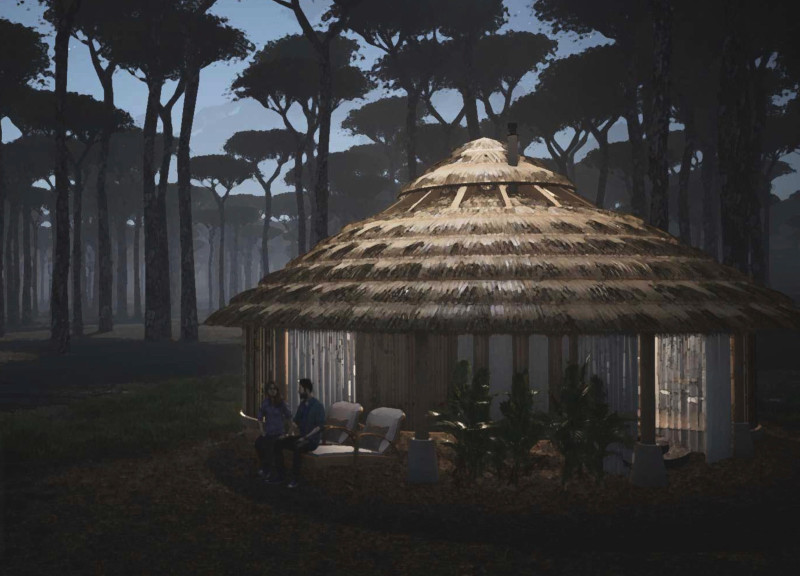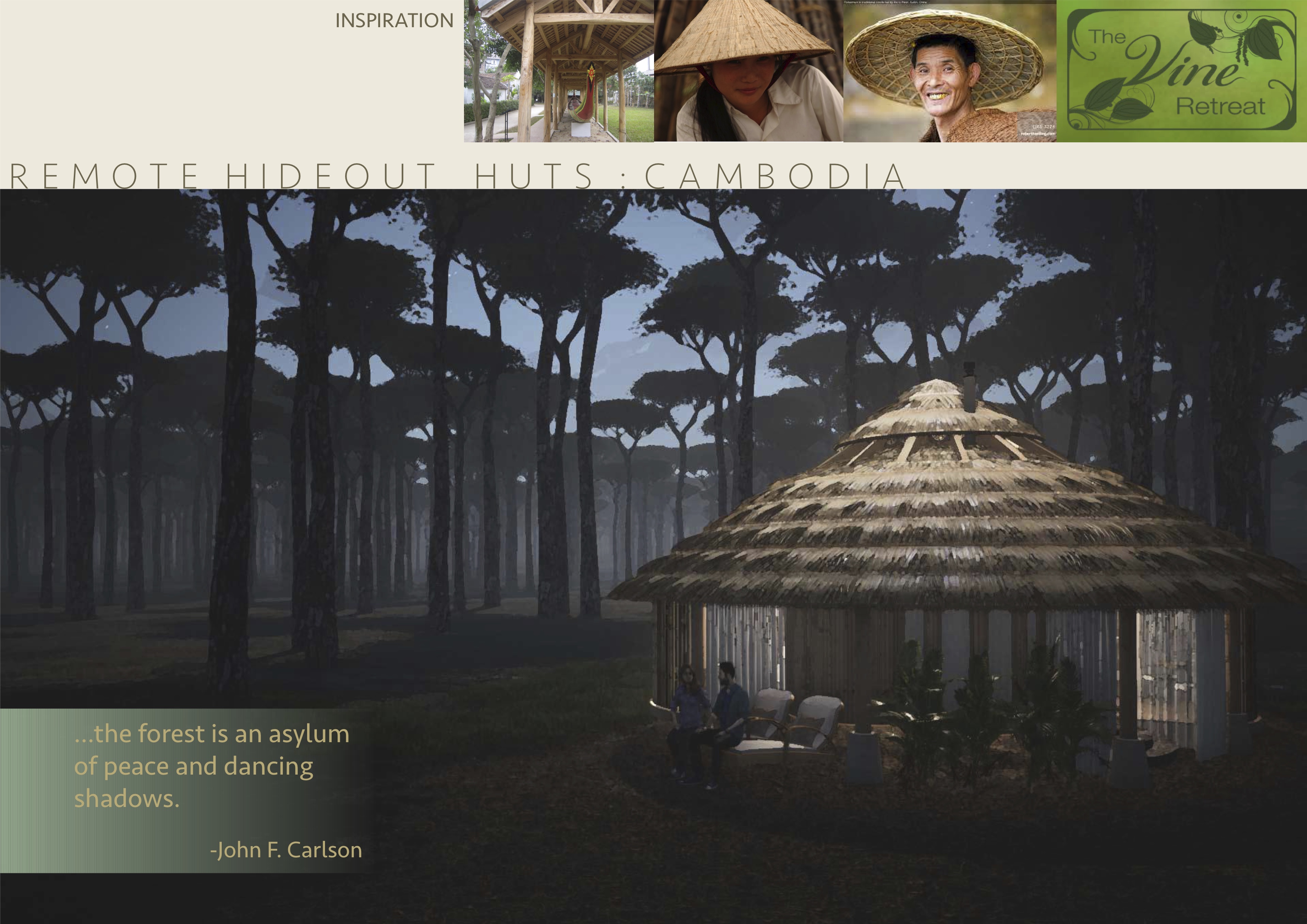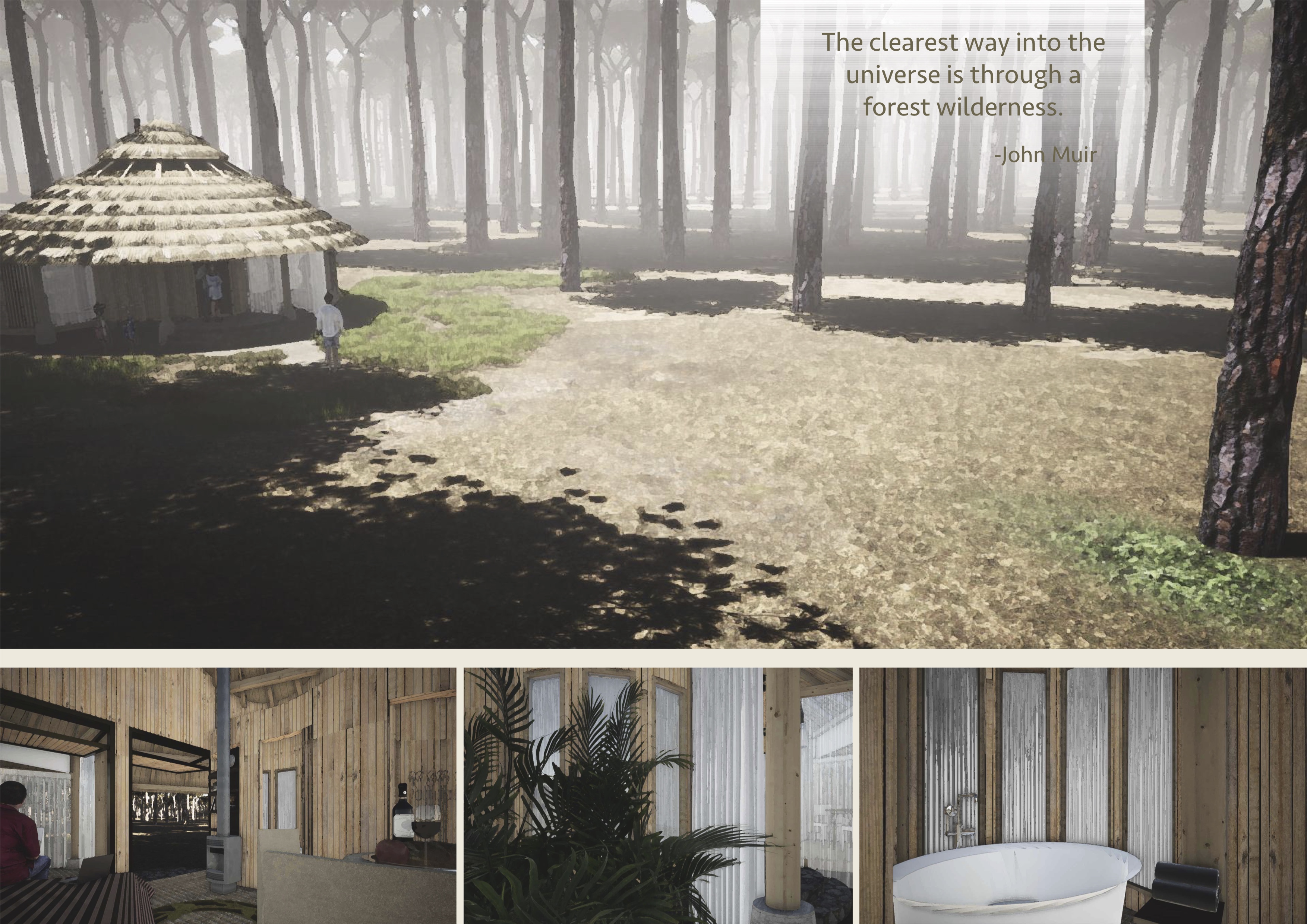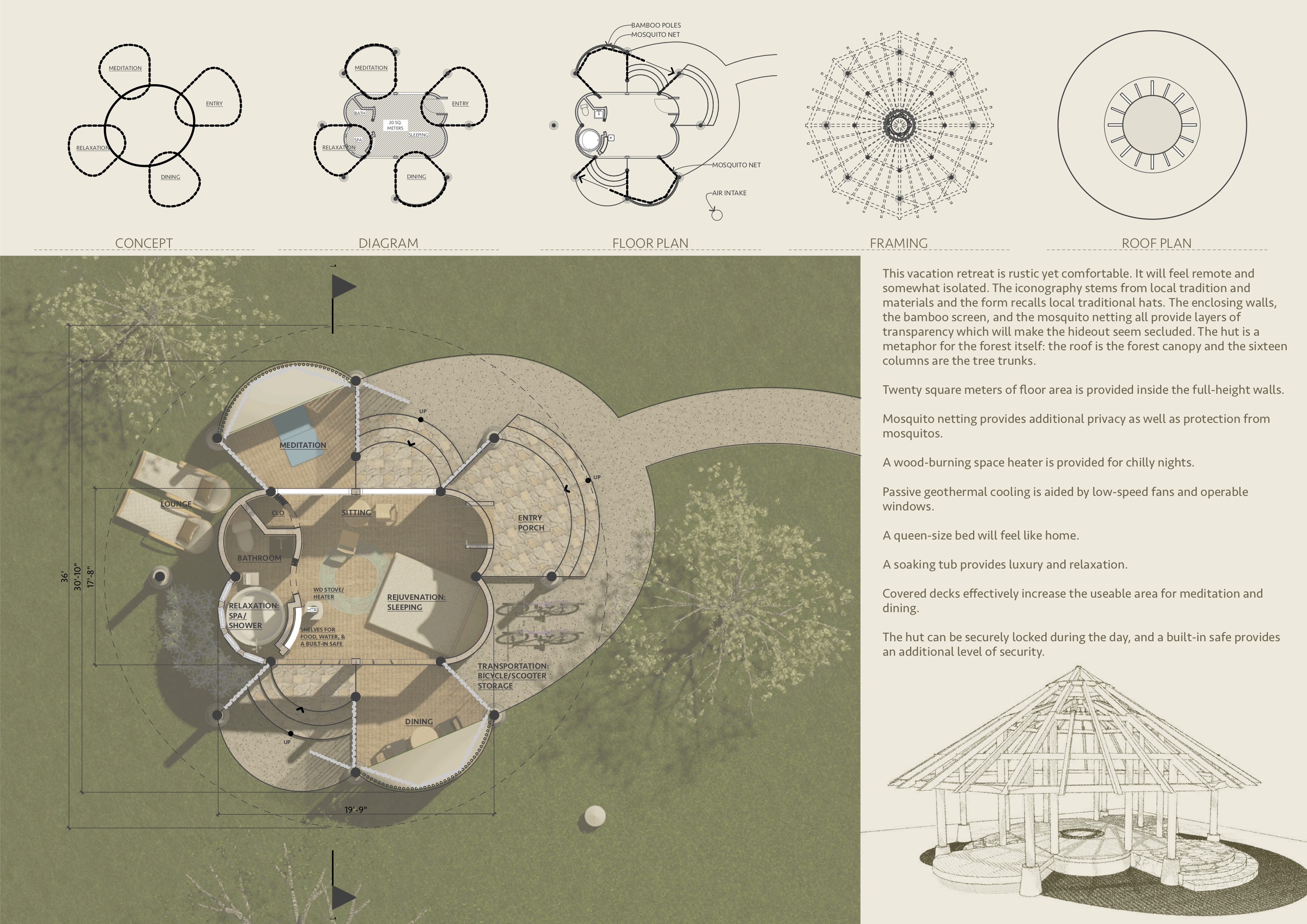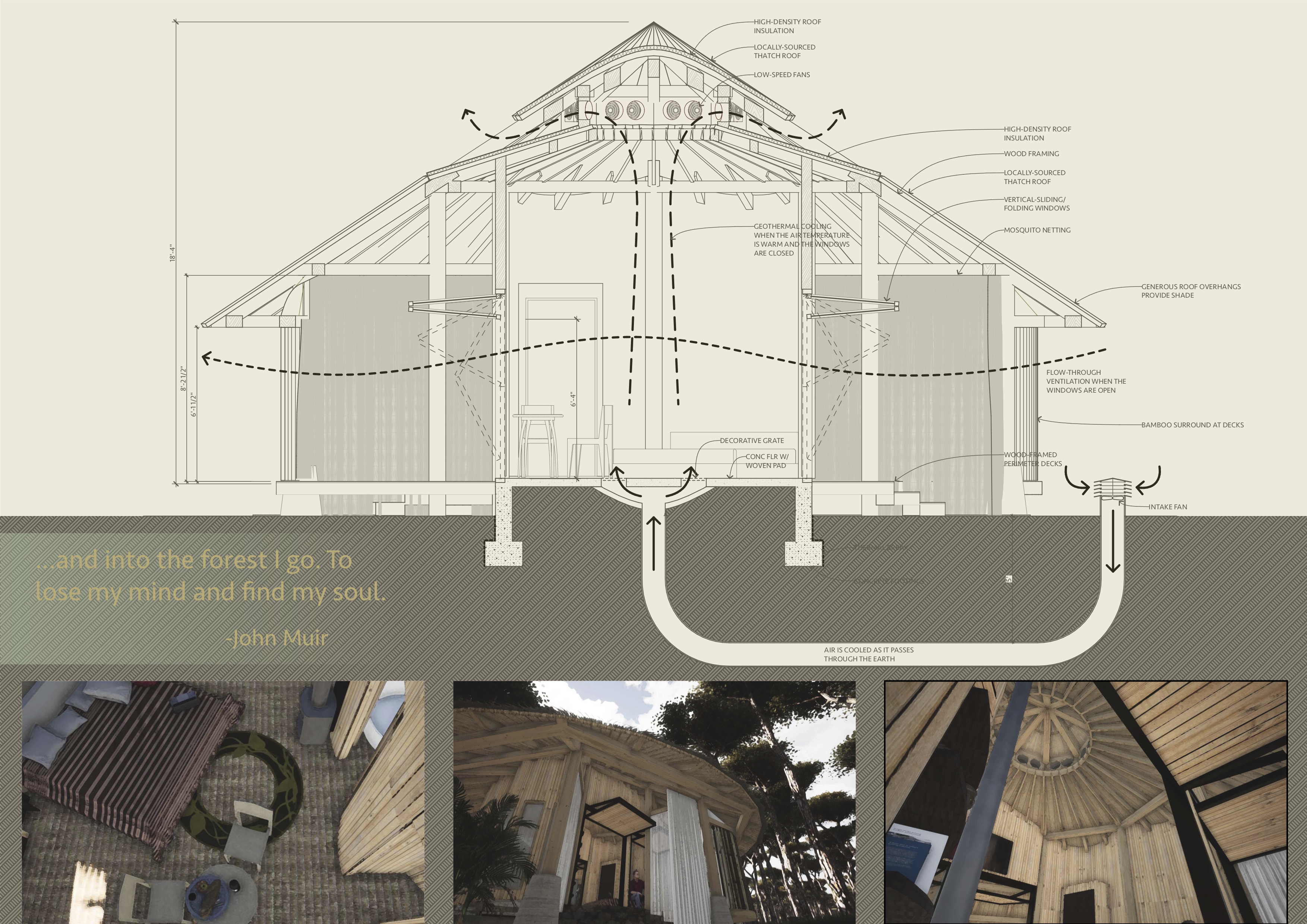5 key facts about this project
The Remote Hideout Huts project is located in the quiet forests of Cambodia and is designed as a retreat that enhances the connection between visitors and nature. The overall concept focuses on blending in with the environment while reflecting local culture. Each hut provides space for relaxation and meditation, offering a calm escape within the natural landscape.
Architectural Form
The design takes inspiration from traditional Cambodian shapes, particularly resembling local hats. This style reflects the cultural heritage of the area. The layout supports both private reflection and social interaction, allowing visitors to enjoy various activities in thoughtfully arranged spaces.
Materiality
Locally sourced materials are a key part of the design, reinforcing the connection to the environment. Bamboo makes up the walls and screens, known for its strength and suitability for the region. The thatch used for the roof provides effective shelter from the elements and is a technique rooted in local practices. Wood framing offers stability while contributing to the overall rustic look and feel of the huts.
Sustainable Features
Passive cooling is central to the comfort of the huts. Features such as low-speed fans and operable windows encourage natural airflow, reducing the need for energy use. Outdoor decks extend the usable space, allowing for dining and relaxing outdoors. These spaces are designed to enhance interaction with the forest, inviting guests to enjoy the surrounding beauty.
The integration of these design elements creates accommodation that respects and complements its cultural and natural context. Each hut serves not only as a place to stay but also as a means for guests to engage more deeply with the peaceful Cambodian landscape. The play of light and shadow through the thatch roof and bamboo walls adds to the experience, drawing attention to the dynamics between built space and nature.


